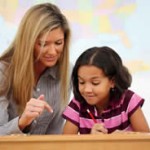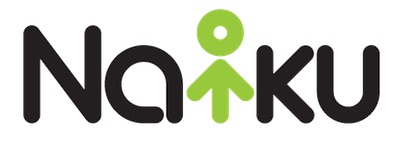Creating & Sustaining Effective Classroom Assessment Practices
If you are trying to decide where to send your child to school, your best bet might be to focus on which teacher(s) your child gets rather than on which school.
Why?
The vast majority of studies that have examined the classroom teacher’s impact on student learning have come to a simple conclusion: Out of all aspects of schooling, the teacher has the most positive impact on student learning (for a review of several studies, see Nye, Konstantopoulos, & Hedges, 2004).
In addition to teachers’ influence on student learning, we also know that when teachers integrate effective classroom assessment practices with their instruction, student learning improves significantly (Black & Wiliam, 1998).
If this is the case, shouldn’t we see widespread evidence of teachers doing this in their classrooms throughout this and other countries?
In fact, we do not. Why not?
Professional development and training. Period.
While some educators are very savvy about assessment and how best to use the results in their districts, schools, and classrooms, a lot of administrators and teachers across the country aren’t so knowledgeable about it.
In fact, many educators receive pretty minimal training in understanding, developing, using, and making decisions based on assessments—including large-scale, annual summative assessments to classroom-based, instructionally embedded, formative assessment. And there’s an enormous variety of assessment types, methods, and uses between these two.
Assessment isn’t just about giving students “tests.” It’s about getting to know what students know, and there are a myriad of ways to do this—ways that dramatically change the nature of the involvement of and relationship between students and teachers and ways that significantly alter instructional practices and student learning.
In effect, assessment can be a process for both teachers and students to gather on-going evidence of learning, for informing instructional decisions, and for increasing students’ and teachers’ understanding of student learning. In this broader sense, assessment itself becomes part of the learning process for teachers and for students and actively involves both.
In other words, assessment is not just a “test” used to measure student learning; assessment becomes a means to advance it (Chappuis, Stiggins, Arter, and Chappuis, 2005).
Take a step back and look at Big-Picture Assessment.
We can use certain types of assessment as measures of student learning (e.g., annual standards-based assessments, benchmark/interim assessments, end-of-course tests, end-of-chapter tests). This type of assessment best serves the purpose of accountability, of ranking students, or of certifying understanding or achievement.
On the other hand, we can embed into instruction another type of assessment for learning (e.g., teacher and student observation, questioning, descriptive feedback, student self-assessment, peer assessment). Here, the priority of assessment is to support student learning. On-the-fly instant polling of your students is a great way to embed formative assessment into learning and instruction.
Given that the classroom is the primary location of student learning, it is vital that teachers understand the role of effective classroom assessment. It’s these instructional, in-the-classroom assessment practices that can have the most immediate and positive impact on what students know.
At Naiku, our comprehensive next generation assessment platform was designed for effective classroom assessment. We offer a series of FREE benchmark assessments aligned to the Common Core State Standards. Quick Question, our web-based classroom student response system, allows teachers to instantaneously assess students to immediately know whether students have understood the content and whether instruction has to be adapted.
Sign up now for a Free 30-Day Trial of Naiku to increase the effectiveness of your classroom assessment practices. Your free trial includes the series of free benchmark assessments as well as Quick Quick. In addition, you’ll be able to create or import your own assessments in any grade or subject.
Back to training . . . Unfortunately, most educators receive very little training in effective assessment practices—from large-scale, summative assessment to classroom formative assessment—before or during their teaching experiences.
The regrettable consequence of this lack of assessment training is that both educators and students are denied access to significant amounts of information necessary for building a deeper understanding of student learning and for adjusting instruction to more closely meet the learning needs of each student.
For this instructional adjustment to take place effectively, teachers need to know how to do it, how to support it, and how to sustain it.
To sum it up, two facts stand bold in their simplicity:
- Classroom teachers have more positive impact on student learning than any other aspect of schooling, and
- Effective use of classroom assessment for learning (formative assessment) has a significant, positive impact on what students learn.

So, in terms of improving student learning, a lot hinges on the knowledge and skills of teachers.
If we want to improve the quality of teaching, certain conditions need to be met. Most immediately, we need to be able to recognize the causes of effective teaching.
This is a matter of identifying the particular features of teaching that when teachers engage in them, more learning happens, and when teachers do not, less learning takes place.
In the final analysis, the challenge for educators is to “develop models of professional development and scalable systems of delivery that faithfully disseminate the content of assessment for learning, while also providing sustained, meaningful assistance to teachers who are attempting to replace long-standing habituated practices with more effective ones” (Thompson & Wiliam, 2007).
REFERENCES
Chappius, S., Stiggins, R.J., Arter, J., Chappuis, J. (2005). Assessment for Learning: An Action Guide for School Leaders, Assessment Training Institute, Portland, OR.
Nye, B., Konstantopoulos, S., & Hedges, L. V. (2004). How large are teacher effects? Educational Evaluation and Policy Analysis, 26(3), 237-257.
Thompson, M., Wiliam, D., “Tight but Loose: A Conceptual Framework for Scaling Up School Reform,” Paper presented at the annual meeting of the American Educational Research Association (AERA), April 9 – April 13, 2007, Chicago, IL.

